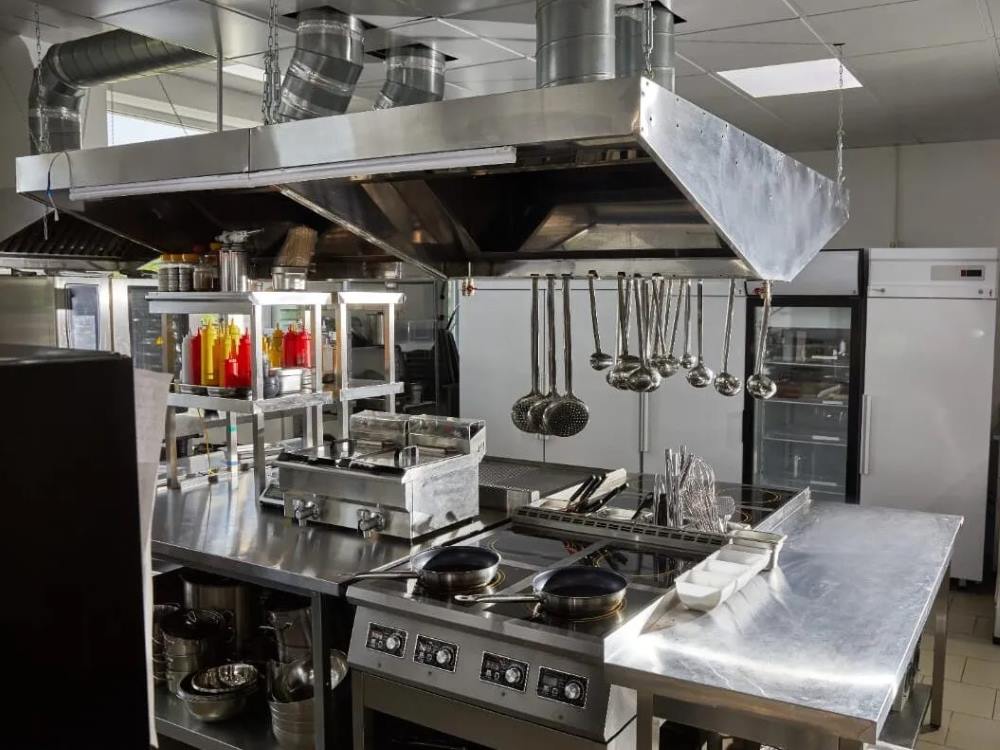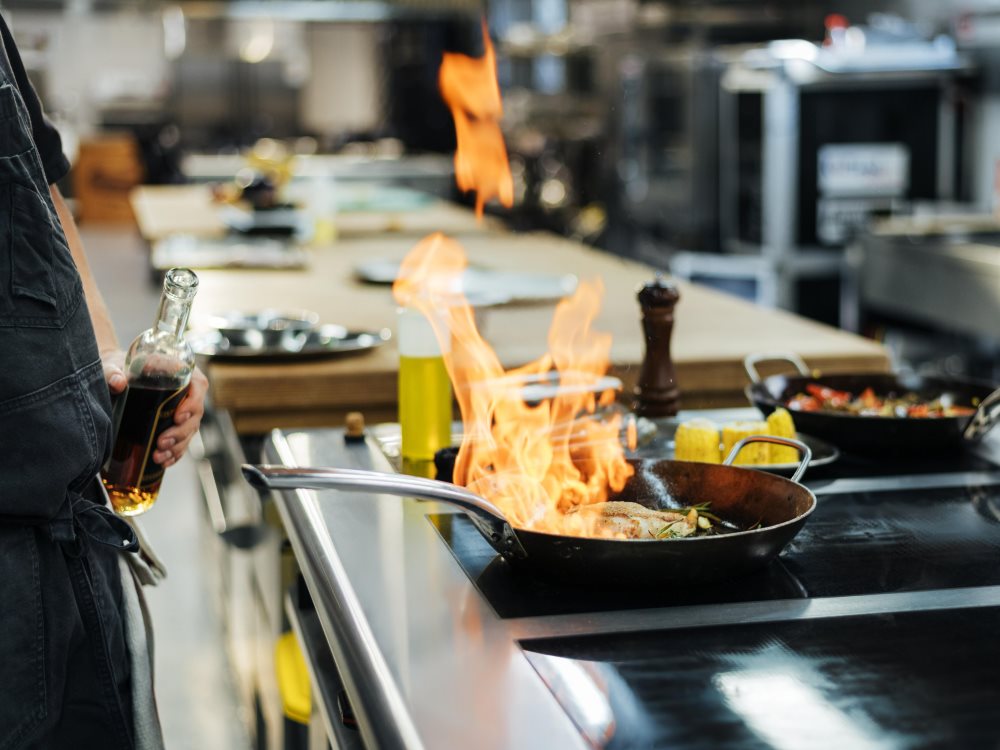Maintaining a safe and effective commercial kitchen is of utmost importance due to its numerous moving components. The presence of a reliable kitchen exhaust system is among the most crucial elements of a safe kitchen. Knowing the fundamentals of a commercial kitchen exhaust system is essential whether you’re opening a new restaurant or remodeling your existing one.
Why a Kitchen Exhaust System Matters
First, your kitchen exhaust system is key to maintaining good air quality and safety. It clears out smoke, grease, heat, and odors, stopping them from spreading throughout your building. Without proper ventilation, your kitchen can quickly turn into a health hazard, endangering both your staff and customers.
Benefits of a Good Ventilation System
- Cleaner Air: Keeps the kitchen air fresh and breathable.
- Temperature Control: Helps manage kitchen temperatures, making it more comfortable for your team.
- Fire Safety: Cuts down on grease buildup, which can be a major fire risk.

Essential Requirements for a Commercial Kitchen Exhaust System
The kitchen vent system needs to meet a few important requirements when you’re planning or updating it. Using these rules will make sure that your system is safe, works well, and follows the rules.
Choosing the Right Hood
Definitely a key part of your kitchen’s airflow system is the exhaust hood. For what you’re cooking, it needs to be the right size and shape. For example, Type I hoods are made for machines that make vapors that are full of grease, while Type II hoods are made for machines that make heat and wetness but not grease.
Ductwork Details
Ductwork carries the dirty air that is leaving your kitchen. Installing it properly and keeping up with regular maintenance is important for it to work well. They should be made of strong materials like stainless steel and be the right size to handle the airflow in your kitchen.
- Durability: Ducts should withstand high heat and potential grease buildup.
- Routine Cleaning: Regular cleaning keeps grease from building up, which lowers fire risks.
Ventilation Rates and Airflow
The effectiveness of your exhaust system depends a lot on ventilation rates and airflow. These should be calculated based on the size of your kitchen and the type of equipment you’re using. Proper airflow ensures that all the bad stuff is getting pulled out of the kitchen.
Meeting Local Codes and Regulations
Every commercial kitchen needs to meet local building codes and health regulations for ventilation. The minimum specifications for hood size, ventilation rates, and duct materials are often covered by these regulations. To ensure that the kitchen ventilation system in your restaurant satisfies all local regulations, it is a good idea to get professional advice.
Expert Installation and Upkeep
It’s important to hire a pro for installation and regular maintenance. Proper installation ensures your kitchen exhaust system runs efficiently. Regular maintenance prevents costly repairs and keeps your system compliant with safety regulations.
Customizing Your Kitchen Exhaust System
Finally, your vent system should be tailored to your specific needs since no two kitchens are the same. Whatever kind of restaurant you run—a small café or a big one—your system should be able to handle the needs of your kitchen. Assist professionals who know how to create a business kitchen exhaust system that completes your requirements.
Conclusion
In brief, a well-designed and well-kept industrial kitchen exhaust system is essential for any kitchen to be successful. Keeping the air clean and lowering the risk of fire saves your employees, customers, and property. Making sure you follow local rules and knowing the most important requirements will help you keep your kitchen safe and running smoothly. The long-term success of your cooking operations depends on you buying the right kitchen ventilation system.
